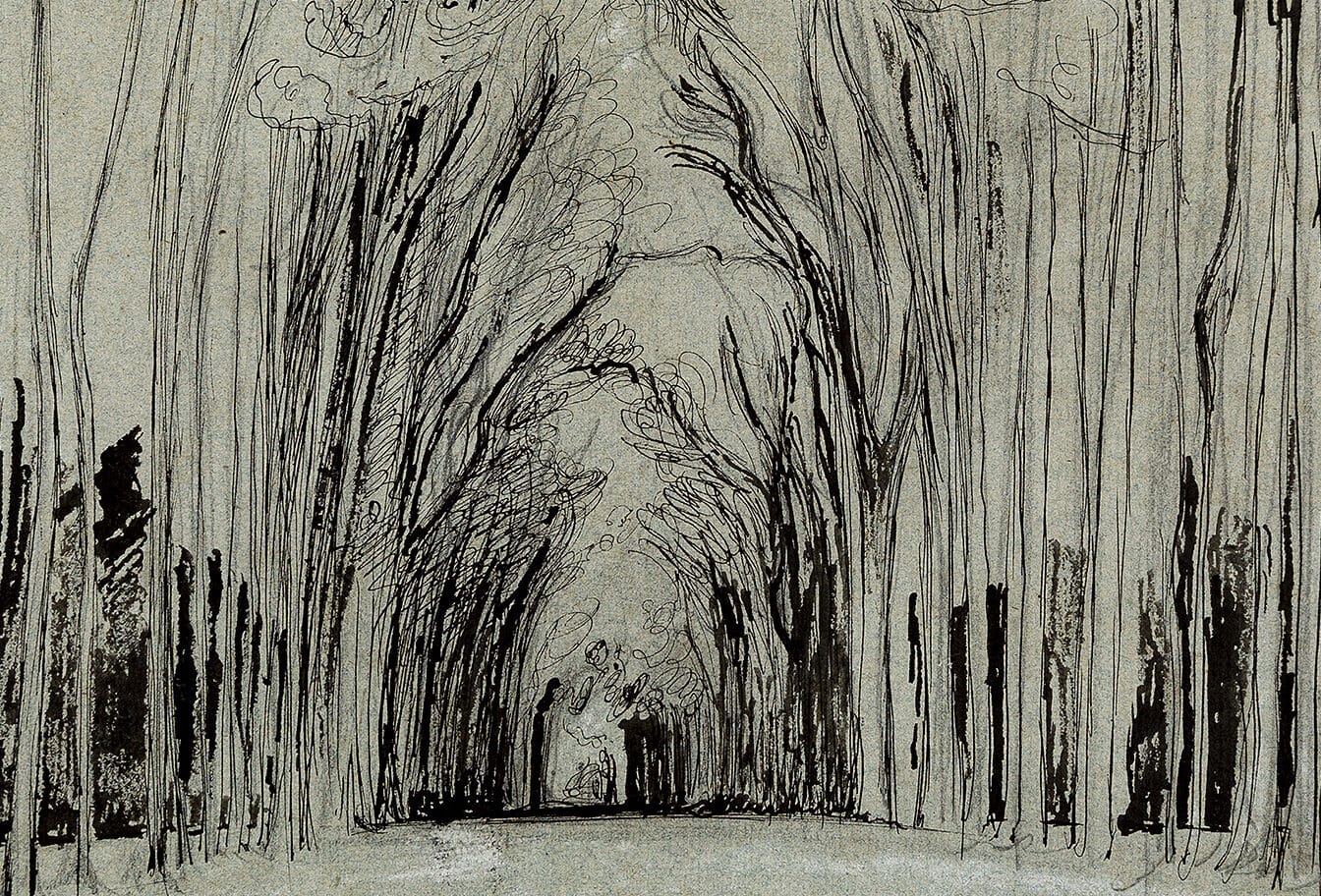Where to Begin? – Juhani Pallasmaa
This is the first in a series revisiting responses from architects to the question: Where to Begin?. The question was posed by the Drawing Matter editors while compiling the first volume in our Extracts series – find more information here.

Beginning to sketch a project has always been easier for me than beginning to write. Design tasks are always placed, and this definite location and context gives them a concreteness that immediately invites the hand to sketch, and ideas begin to arise throughout the process of sketching. Beginning to write is more open and indefinite and, consequently, the first idea or word is never self-evident. Yet, it does not really matter where I begin, as the process itself gradually reveals and concretises the subject and its potential. The resistance of the beginning arises from the uncertainty of placing myself in relation to the task and having it internalised. The working process is similar to walking into a forest. Advancing through the spaces, terrain and vegetation gradually reveal their internal structures, meanings and possibilities. The choice of the exact path is not important, as I keep moving back and forth, returning and going around, and eventually covering the entire terrain.
Every now and then, even after days of work, I realise I have not found what I was intuitively looking for. After a feeling of disappointment, I walk into another forest, or even the same one again, but from a different direction. However, my entire sense of self and being has now internalised the experience of the walk, and the work advances fluently. The ‘forest’ is really the realm of my own experiences, thoughts, memories and dreams.
In the beginning, I do not know where I am heading, but I already feel an excitement and expectation in my body and imagination. The beginning may well be a singular feeling, image or word, which can well be abandoned in the process. The beginning is always an invitation and promise, a combination of assurance and doubt, excitement and pain.
I never look at design works of other architects before I begin to sketch. In order to tune my sense of being, I frequently look at works of art, such as the early Renaissance paintings of the Siena School, especially Duccio. Sometimes I look at paintings of Fra Angelico, Piero della Francesca, Rembrandt or Vermeer. Of the modern artists, the paintings of Claude Monet and Pierre Bonnard especially inspire me through fusing the immense and the minute, distant and near, inside and outside, nature and artefact, into a singular experience. Salman Rushdie gives a touching image of this creative mood: ‘Literature is made at the boundary between self and the world, and during the creative act this borderline softens, turns penetrable and allows the world to flow into the artist and the artist to flow into the world.’ *
* Salman Rushdie, ‘Isn’t Anything Sacred?’ written in memory of Herbert Read. Parnasso 1, Helsinki (1990), 8.
This text was first published in Drawing Matter Extracts 1: Where to Begin?. Find the Extracts series on our online bookshop.
